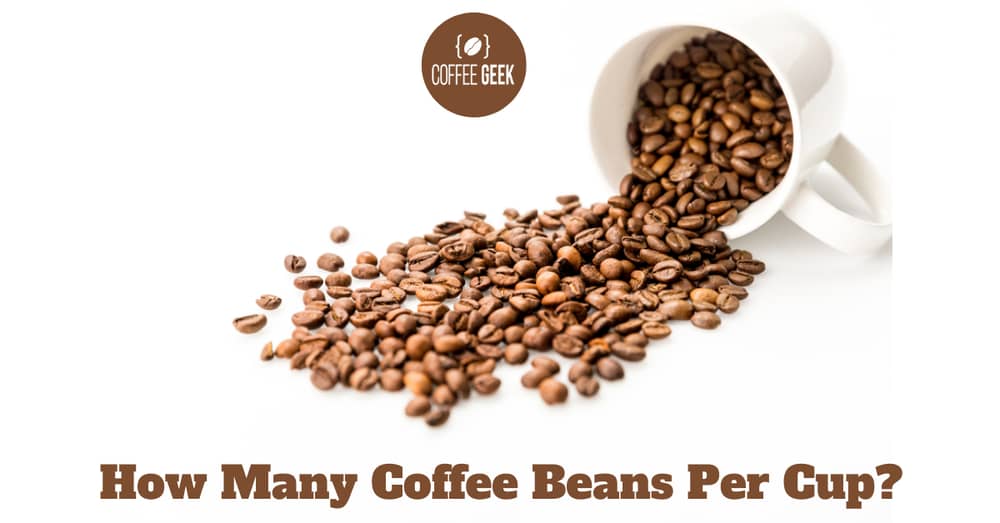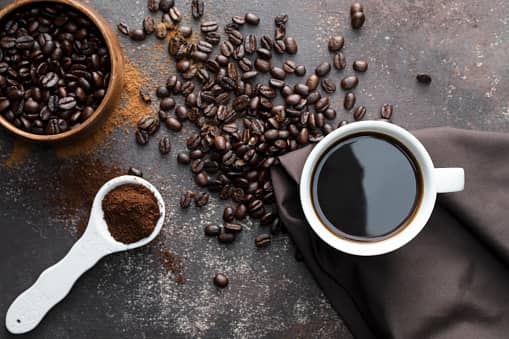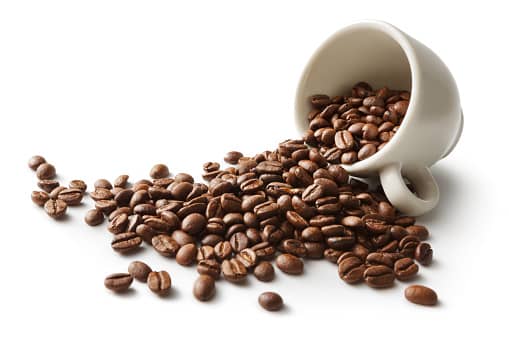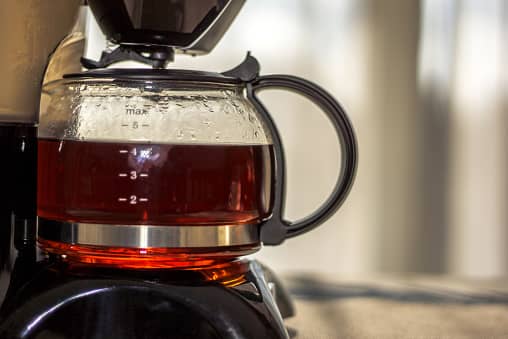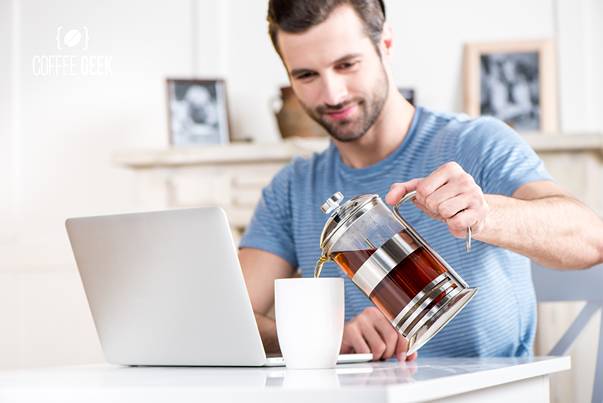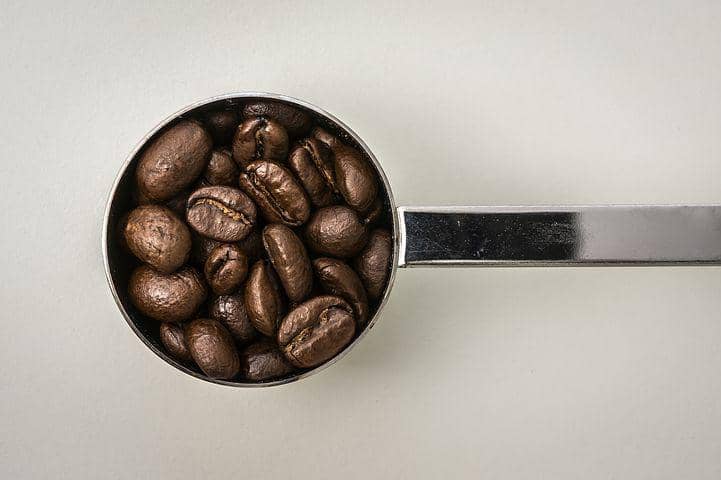The amount of coffee beans in a cup is important because it can determine how strong the coffee is. If there are too many coffee beans, the coffee can be bitter. If there are not enough coffee beans, the coffee might be weak.
So, if you want to have a perfect cup of coffee, you need to know how many beans to use. The good news is that you’re in the right place!
In this article, we’ll show you how many coffee beans per cup you need to find your “Golden Ratio”, which is all depending on the type of coffee you’re making.
But first, let’s see the different sizes of a cup.
- What is a coffee cup? Easy question right? Not so fast…
- How many coffee beans are in a cup?
- Factors That Affect How Many Coffee Beans per Cup You'll Need
- Why should I measure my coffee beans before brewing?
- Why is it important to use the right ratio of coffee and water?
- How to measure coffee beans?
- Conclusion
- FAQs
What is a coffee cup? Easy question right? Not so fast…
A coffee cup is a small container that is used to hold coffee. It is usually made of ceramic, porcelain, or glass. A coffee cup can also be made of plastic, metal, or even paper.
A coffee cup comes in different sizes, but the standard cup used in most coffee shops in the US is 8 ounces fluid or 236 ml.
On the other hand, there are still a lot of coffee cup sizes out there, and it can be really confusing. So, we’ve made a list of the most common coffee cup sizes that you’ll encounter.
Coffee Cup Sizes
– 3 fluid ounces or 89 ml (this is considered a small cup)
– 6 fluid ounces or 177 ml (this is considered a medium cup)
– 8 fluid ounces or 236 ml (this is considered a large cup or the standard coffee cup size)
– 12 fluid ounces or 354 ml (this is considered an extra-large cup)
It’s important to know this because the number of beans you will use will depend on the size of your cup.
So, without further ado, let’s get started!
How many coffee beans are in a cup?
Most people don’t know how many beans they need for a cup of coffee. In fact, many people just throw a handful of beans into their coffee maker and hope for the best!
The truth is, the amount of coffee beans you need depends on a number of factors, including the type of coffee you’re making, the strength, and your personal preferences.
For example, if you’re making a cup of drip coffee, the ideal amount of coffee you should use is 2 tablespoons of ground coffee (that is equivalent to 10 grams or 76 beans of coffee) for a 6 fluid ounce.
However, if you want it stronger, you can add more coffee, or if you want it weaker, you can add less coffee. That means the amount of coffee in your cup can be adjusted to taste.
On the other hand, if you’re making a pot of coffee that equals 12 cups of fluid, you’ll need to use 24 tablespoons (120 grams or 905 beans) of ground coffee.
This also means that the amount of coffee in your cup can depend on the size of your cup.
As you can see, the amount of beans needed for a cup of coffee varies depending on the type of coffee.
Sounds confusing? Don’t worry; we’ve got you covered.
In the table below, you’ll find the perfect coffee-to-water ratio depending on the type of coffee you’re making and the size of your cup.
Drip coffee
Drip coffee is brewed with hot water passing slowly through the coffee grounds.
The grind of these beans is much coarser than espresso.
This coffee is usually served in a cup size of 6 fluid ounces.
A general rule of thumb for this coffee is to use two tablespoons (10 grams or 76 coffee beans) per six ounces of water. This ratio can be adjusted to taste.
For a more robust brewed coffee, use more beans; for a weaker cup, use fewer beans.
Coffee to water ratio: 1:16 or 1 gram coffee to 16 ml water.
| Size of Cup | Coffee beans needed | ||
| Tbsp. | Grams | Beans | |
| 6 fluid ounces or 177 ml | 2 tablespoons | 10 grams | 76 coffee beans |
| 8 fluid ounces or 236 ml | 3 tablespoons | 15 grams | 113 coffee beans |
| 12 fluid ounces or 354 ml | 4 tablespoons | 20 grams | 150 coffee beans |
The coffee bean to water ratio can also be expressed in tablespoons. For example, 2 tablespoons of coffee beans are equivalent to 10 grams or 76 beans.
Now that we know the coffee-to-water ratio let’s move on to the next type of coffee.
Espresso
Espresso is coffee that is brewed by forcing a small amount of hot water under pressure through finely-ground coffee beans.
The grind of the beans is much finer than drip coffee. This coffee is usually served in small cup sizes, such as 3 fluid ounces.
The coffee to water ratio for espresso is 1:2 or 1 gram coffee to 2 ml water. This coffee-to-water ratio can be adjusted to taste.
Size of cup: 2 fluid ounces or 59 ml
| Shots | Coffee beans needed | ||
| Tbsp. | Grams | Beans | |
| Singe shot | 1 tablespoon | 5 grams | 37 coffee beans |
| Double shots | 2 tablespoon | 10 grams | 75 coffee beans |
Now that we know the coffee-to-water ratio let’s move on to the next type of coffee.
French Press coffee
French press coffee is brewed by placing ground coffee in a French press pot and adding hot water.
After a few minutes, the plunger is depressed to separate the grinds from the liquid.
The grind of the beans for this type of coffee should be coarse. This coffee is usually served in cup sizes such as 8 fluid ounces.
The coffee to water ratio for French press coffee is 1:18 or 1 gram of coffee to 18 ml of water. Like other coffee, you can also adjust this ratio depending on your taste.
| Size of Cup | Coffee beans needed | ||
| Tbsp. | Grams | Beans | |
| 3 cups (12 oz or 254 ml) | 2-3 tablespoons | 10-15 grams | 75-133 coffee beans |
| 4 cups (17 oz or 503 ml) | 4-5 tablespoons | 20-25 grams | 150-188 coffee beans |
| 8 cups (34 oz or 1 l) | 8-10 tablespoons | 40-50 grams | 301-377 coffee beans |
| 12 cups (51 oz or 1.5 l) | 17-18 tablespoons | 88 grams | 664 grams |
Aside from cups, French Press normally brews in batches. For example, a Bodum Chamboard French Press coffee maker brews up to 1 liter or 34 fluid ounces of coffee. For this size, you’ll need 78 grams or 580 beans of coffee.
Factors That Affect How Many Coffee Beans per Cup You’ll Need
Now that we’ve gone over the different types of coffee and their corresponding coffee-to-water ratios let’s talk about the factors that can affect how many beans you’ll need per cup.
The grind of the beans
The grind of the beans is one of the most important factors that will affect how much coffee you’ll need per cup. If the beans are ground too finely, you’ll need more beans.
If the beans are ground too coarsely, you’ll need fewer beans.
It would be best to use a coffee bean grinder to get the perfect grind for your coffee.
The type of coffee
The type of coffee you’re making will also affect the size of the cup you’ll need. For example, if you’re making espresso, you’ll need a small cup because espresso is a concentrated coffee.
This is because espresso is made with a higher coffee-to-water ratio than drip coffee.
So if you want to make a cup of espresso, you’ll need a smaller cup than if you’re going to make a cup of drip coffee.
The size of the cup
The size of the cup you’re using will also affect how many beans you’ll need per cup. If you’re using a large cup, you’ll need more beans than using a small cup.
This is because there’s more liquid in a large cup, so you’ll need more coffee to make a cup with the same strength.
The strength of the coffee
The strength of the coffee is another factor that can affect how many beans you’ll need per cup. If you want a more robust cup of coffee, you’ll need more beans. If you want a weaker cup of coffee, you’ll need fewer beans.
Brew method
The brew method you use will also affect the number of coffee beans you’ll need per cup. For example, if you’re using a drip coffee maker, you’ll need more beans than if you’re using a French press.
Different brewing methods require different grinds, so be sure to adjust your grind accordingly.
Now that we’ve gone over the different types of coffee and the factors that can affect how many beans you’ll need per cup let’s talk about how to grind your coffee beans.
Roast Level
The roast level of your coffee beans will also affect the number of beans you’ll need per cup. For example, if you’re using dark roast coffee beans, you’ll need fewer beans than if you’re using light roast coffee beans.
This is because dark roast beans are denser and have less surface area than light roast beans.
Additionally, the darker the roast, the more oil is extracted from the beans. This means that you’ll need less coffee by weight to make a cup of coffee with dark roast beans than you would with light roast beans.
Coffee grounds vs. Coffee beans
When making coffee, it’s essential to know the difference between tablespoons of ground coffee/ground beans and coffee beans. This is because the grind of the beans will affect the amount of coffee in your cup.
Coffee grounds are a type of coffee that has been ground into a fine powder. This powder is then used to brew coffee in a coffee maker. The grind of the coffee bean will determine how much coffee is in your cup.
A coffee bean is a type of coffee that has not been ground into a powder. Coffee beans are typically roasted and then ground before being used to brew coffee.
When it comes to tablespoons of coffee grounds vs. coffee beans, it is essential to know that one tablespoon of ground beans is equivalent to 5 grams.
On the other hand, a single coffee bean is equivalent to 0.1325 grams. It’s important to know this because there’s a big difference between coffee beans and coffee grounds.
So, when making coffee, be sure to use the appropriate measure for the ground coffee or coffee beans. This way, you’ll get the perfect cup of coffee every time!
Why should I measure my coffee beans before brewing?
Brewing coffee is an art and a science. The perfect cup of coffee is a result of many factors, including the quality of the beans, the grind of the coffee, the water temperature, and the brewing time.
1) Ensure you have the correct ratio of coffee to water.
2) Get a consistent cup of coffee every time.
3) Make sure your coffee isn’t too weak or too strong.
Additionally, the grind of the coffee bean will affect the amount of coffee in your cup. If you use too much ground coffee, your coffee will be too strong. If you use too little ground coffee, your coffee will be weak.
The perfect cup of coffee is a balance of all these factors. By measuring your beans, you can ensure that you are using the right amount of ground coffee. This will help you brew the perfect cup of coffee every time!
Why is it important to use the right ratio of coffee and water?
The ratio of coffee to water is important because it affects the strength of the coffee. If you use too much water, the coffee will be weak. If you use too little water, the coffee will be strong.
The perfect cup of coffee is a balance of all these factors. By using the right ratio of coffee and water, you can ensure that you are making a strong or weak cup of coffee.
How to measure coffee beans?
There are two main ways to measure coffee beans: by weight or by volume.
Weight
Measuring weight is the most accurate way to measure coffee beans. This is because different types of beans have different densities, so you can’t always rely on a cup of beans being the same weight.
For example, a cup of light roast coffee beans will be lighter than a cup of dark roast coffee beans because dark roast beans are denser.
Volume
Measuring by volume is less accurate than measuring by weight, but it’s still a good way to measure coffee beans.
To measure beans by volume, you can use a scoop or a tablespoon. A level scoop or tablespoon should hold about 7 grams of coffee beans.
So if you’re using a tablespoon or scoop to measure your beans, you’ll need 2 scoops or tablespoons of coffee beans for every cup of coffee you want to make.
Conclusion
To sum it up, there’s no one-size-fits-all answer to the question of how many coffee beans you should use per cup of coffee. It depends on your personal preferences and the brewing method you’re using.
However, if you’re new to this and not sure where to start, you can follow the ratios mentioned in this article. You can also consult a coffee expert at your local coffee shop for advice. Thanks for reading!
FAQs
How many whole coffee beans make a cup of coffee?
There are approximately 70 beans in a cup of coffee. Coffee is made by extracting the flavor from roasted beans. The number of beans in a cup depends on the size and shape of the bean, but there are usually about 60-70 per cup.
How long do coffee beans last?
When it comes to coffee beans, it is generally recommended that you use them within 6-9 months of the purchase date. This is because coffee beans are volatile and begin to lose their flavor and aroma over time. However, if your beans are sealed and stored properly, they can last up to a year or longer.
Does espresso use more coffee than drip?
Yes, espresso machines use about twice as much coffee as drip coffee machines because the water is forced through the grounds at high pressure, which extracts more flavor and caffeine. This is why an espresso tastes stronger and has more caffeine than a cup of drip coffee.
Which coffee is stronger, light or dark roast?
It’s a common misconception that dark roast coffee is stronger than light roast coffee. The truth is, the level of roasting has nothing to do with the strength of the coffee. The amount of caffeine in coffee beans diminishes as they are roasted for longer periods of time. So, in actuality, light roast coffee contains more caffeine than dark roast coffee.
Does coffee bean size affect taste?
Yes, the size of coffee beans can affect both the taste and quality of your coffee. Larger coffee beans have more surface area and therefore more flavor, while smaller beans have less surface area and are less flavorful.

